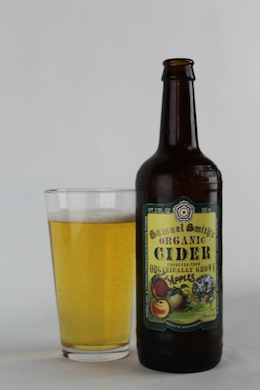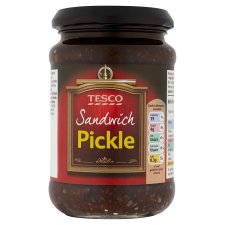Flickr/Kate Dugas
It’s often said that the U.K. and U.S. are two countries divided by a common language (just as often as it’s disputed who first said it). Nowhere is this truer than in the larder (or pantry) where both Brits and Yanks use the same word for two very different foods. Whether you’re a tourist on the island trying to decipher a menu or a counter-top traveler making sense of an English cookbook, here’s a super secret decoder to save you from getting lost among the cakes and ale.
1. Pudding.
British food doesn’t get any more complicated than this. Pudding is a word for the sweet course, an alternate to American “dessert” as in “what’s for pudding?” But pudding is also a dish served for the pudding course. Like a cake, it’s baked or steamed and served warm. Think sticky toffee and golden sponge, not the butterscotch and chocolate custard of your American elementary school cafeteria. However, it’s also Yorkshire pudding (a bread-like side for roast beef) and black pudding (sausage) and pease pudding (don’t ask). Pudding is a testament to the great British pastime of ambiguity, though I’ve tried to unpack it here and here.
2. Pie.

Flickr/Kai Hendry
It’s true, we all know what pie is on both sides of the ocean: stuff in a crust. But inside the cabinet of pie curiosities, we’ll find many more intriguing specimens on the eastern side of the Atlantic. (Something I’ve tried to unravel at length here.) It’s not just hot chicken pie or steak pie. And of course we share a heritage of apple pie. But loads of savoury pies are served cold in the UK, either as a quick lunch bite or a summer picnic staple—the Melton Mowbray pork pie being the most famous. These cold pies are often gilded with a layer of (highly debatable) jelly and, like a gentle puppy or a well-trained bird, are usually “hand-raised”. Choose a posh game pie, don your tweed, and you might almost be mistaken for Lord Grantham.
3. Jelly.

Gelatine was downgraded in post-war America to a lowbrow manufactured food that came only to be known by its brand name Jell-O. But in the U.K., gelatine is equally enjoyed in grown-up dishes like classic berries in wine jelly and champagne jellies as well as the colorful wibbly-wobbly joy served at children’s parties. (And thanks to these guys, also as a form or art.) The fruity or alcohol layer on the surface of pate or cold meat pies is also “jelly,” as are sauces for meat and game like mint jelly and red currant jelly.
4. Pancakes.

Flickr/Marijke Blazer
Every year on Shrove Tuesday, Brits celebrate pancakes all day in a throwback to the Middle Ages when cream and eggs had to be used up before Lent. And all the rest of the year, they make them for breakfast, snacks, or dessert. These pancakes are thin crepes and, like a Swedish pancake, heavy on the egg with no leavening. Typically served with golden syrup (not maple) or a sprinkling of sugar and lemon squeeze. Craving fluffy America-style pancakes made with baking soda or baking powder? Ask for Scotch pancakes instead.
5. Cider.
In the U.K., cider is two very different things: a vintage drink of English heritage crafted by ever smaller producers and a cheap drink-to-get-drunk sauce for teenagers. What it isn’t ever is a non-filtered apple juice. So don’t tell parents you’re serving cider at your children’s autumn party (ooops!). If a British recipe calls for cider, it’s definitely booze. Try Sam Smith imported from Yorkshire or a domestic J. K. Scrumpy.
6. Coriander.

Flickr/Q Family
U.S. recipes give the edible bits of Coriandrum sativum two names, depending on the use. Cilantro is for the fresh green leaves, and coriander for the seeds, whether whole or ground. But in the U.K., “coriander” catches both. If it’s not qualified with leaves, seeds, or ground, you’ll have to use context to figure it out. Beware tossing two handfuls of intense powder into a Thai curry and sprinkling a mere teaspoon of leaves into an Indian one.
7. Pickle.
Almost always expressed in the singular rather than the plural, pickle is usually a sweet, brown onion spread, not too unlike chutney or relish. No ploughman’s lunch would be dressed without it, but you can also serve pickle with a good cheddar on brown bread. Britain’s iconic Tesco grocery store carries well over 50, including mustard pickle, beetroot pickle, sandwich pickle, and “smooth pickle squeezy;. And of course, given the popularity of south Asian food on the island, pickle is just as often chilli or lime served with your favorite Indian feast.
8. Biscuits.

Flickr/George Redgrave
Like pudding, biscuit is another over-packed portmanteau of a word. Crackers and cookies are both biscuits, which means that oatcakes are biscuits and so are chocolate covered marshmallows. There are as many sub-categories for biscuits as there are meanings of “sorry” in Britain, and the typical grocery store website divides them: savoury biscuits, seasonal biscuits, lunchbox biscuits, sweet biscuits and even breakfast biscuits. The one thing they are not is that savoury scone Americans seem to have misnamed before slathering with gravy.
Anne Bramley is a writer and independent scholar living in Norwich, UK. She’s the author of Eat Feed Autumn Winter and the first woman to create a food podcast, Eat Feed, which Saveur called “the finest way to take your food on the road.” Twitter: @eatfeed.

